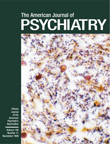Effectiveness of Olanzapine Treatment for Severe Obsessive-Compulsive Disorder
Mr. A, a 21-year-old man, had been suffering from OCD for 4 years, and his mother suffered from type II bipolar disorder. His main obsession was contamination, and his compulsions (washing rituals) occupied 8 hours a day, rendering him unfit for college or employment. Various treatments and augmentation strategies at appropriate doses had been ineffective. His Yale-Brown Obsessive Compulsive Scale total score at his first psychiatric interview was 40. He was taking sertraline, haloperidol, risperidone, and diazepam, but all psychiatric drugs were discontinued except sertraline (150 mg/day), and olanzapine (5 mg/day) titrated up to 10 mg/day over a week. After 15 days, Mr. A reported significantly lessened anxiety and, after 1 month, significantly lessened obsessive-compulsive symptoms. By the third month, his symptoms were occurring for only minutes each week (Yale-Brown Obsessive Compulsive Scale total score of 6). At this point, he decided to work and to attend evening school.Ms. B, a 29-year-old woman, suffered from OCD (with postpartum onset 4 years previously) and had a father who suffered from OCD and alcohol abuse and a mother with type II bipolar disorder. She had order and symmetry obsessions and compulsions that consisted of repeated checking, counting rituals, and washing objects in her room, where she spent 7 hours a day. She became anxious when anyone entered her room and interfered with her rituals. Ms. B was unable to work; her familial and social relationships were severely impaired. Of the various treatments, only fluvoxamine (300 mg/day) led to temporary improvement. Ms. B was given an added 5 mg/day of olanzapine, titrated up to 15 mg over 2 weeks. After 20 days, the dysphoria and irritability that were associated with her compulsions had lessened notably, and over 3 months, her Yale-Brown Obsessive Compulsive Scale total score had decreased progressively from 40 to 8. Her compulsions then occupied only 10 minutes a day. She was undergoing cognitive behavioral therapy and intended to work.
References
Information & Authors
Information
Published In
History
Authors
Metrics & Citations
Metrics
Citations
Export Citations
If you have the appropriate software installed, you can download article citation data to the citation manager of your choice. Simply select your manager software from the list below and click Download.
For more information or tips please see 'Downloading to a citation manager' in the Help menu.
View Options
View options
PDF/EPUB
View PDF/EPUBGet Access
Login options
Already a subscriber? Access your subscription through your login credentials or your institution for full access to this article.
Personal login Institutional Login Open Athens loginNot a subscriber?
PsychiatryOnline subscription options offer access to the DSM-5-TR® library, books, journals, CME, and patient resources. This all-in-one virtual library provides psychiatrists and mental health professionals with key resources for diagnosis, treatment, research, and professional development.
Need more help? PsychiatryOnline Customer Service may be reached by emailing [email protected] or by calling 800-368-5777 (in the U.S.) or 703-907-7322 (outside the U.S.).

